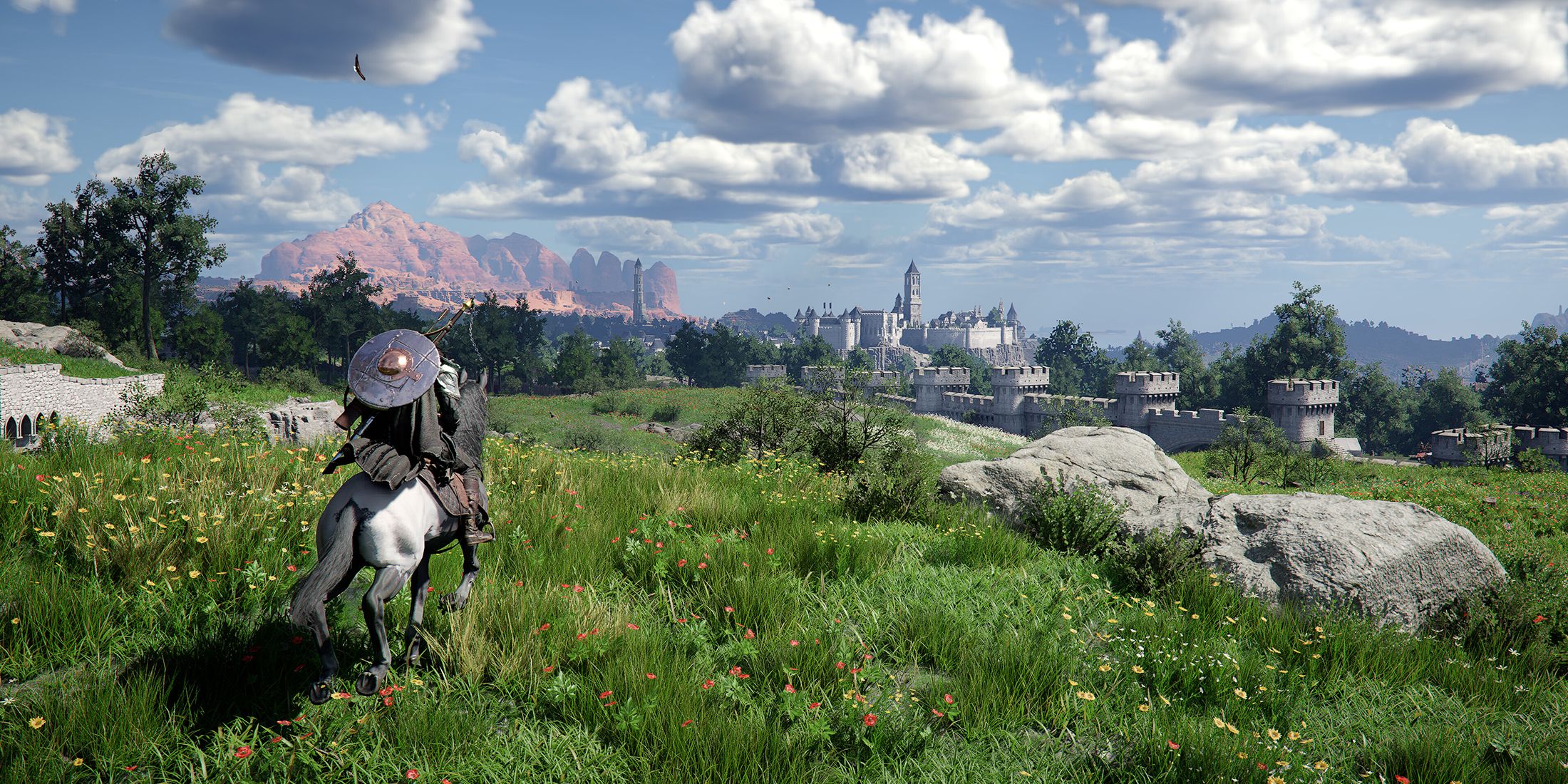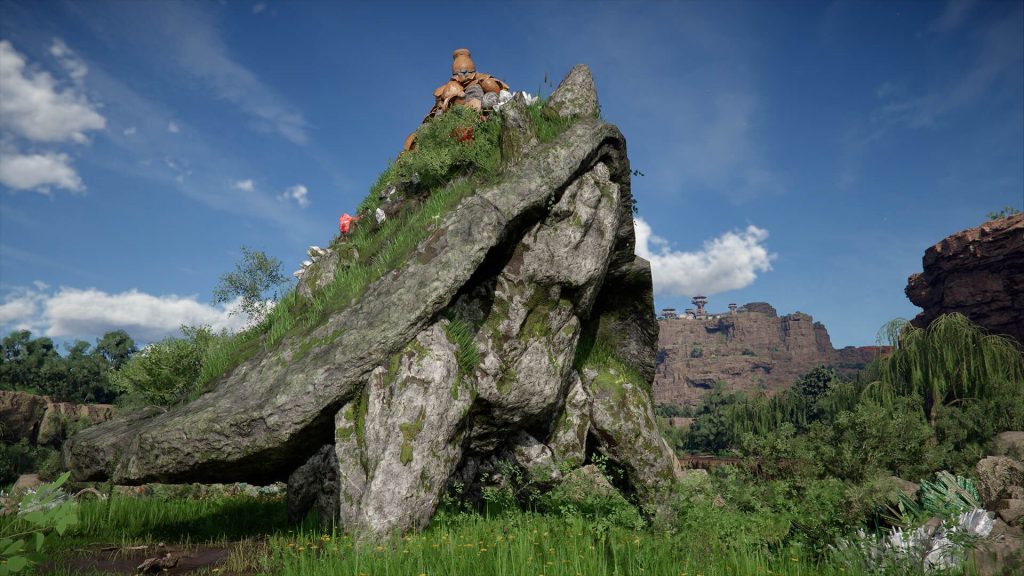Japan is no longer the sole Asian country renowned for producing high-quality AAA video games; China and South Korea have also emerged as significant contributors. A few years ago, I visited Kuala Lumpur and observed the growth of several video game studios there, highlighting Malaysia’s increasing presence in this domain. Turning to South Korea, it has recently gained attention not just militarily but also through its contributions to the gaming industry. To be clear, when referring to Korea here, I am specifically mentioning South Korea, distinct from North Korea, which is known for launching ballistic missiles rather than creative endeavors. Among recent developments from South Korea, one notable title is Crimson Desert, a game announced in 2017 that has steadily gained traction with each subsequent reveal. Initially met with skepticism due to its ambitious nature and perceived challenges on console platforms, the game has since garnered widespread acclaim. During Gamescom, Pearl Abyss presented the game to Western journalists, leading to near-unanimous praise for both its visually stunning quality and deeply engaging gameplay mechanics. Crimson Desert is described as a unique blend of elements from The Legend of Zelda: Breath of the Wild, Dragon’s Dogma, and Assassin’s Creed, with a recently released 50-minute gameplay demo showcasing its capabilities.
South Korea has established itself as a major force in the video game industry alongside Japan and China, with Malaysia also making notable progress. One noteworthy South Korean title that has generated significant interest is “Crimson Desert,” which was announced in 2017. Initially met with skepticism due to past instances of overhype and subsequent disappointments in the industry, “Crimson Desert” gained credibility after a recent showcase at Gamescom 2023 by developer Pearl Abyss. Critics now praise the game for its impressive visuals and deep gameplay, drawing comparisons to titles such as “Zelda: Breath of the Wild,” “Dragon’s Dogma,” and “Assassin’s Creed.” The studio recently released a 50-minute gameplay video.
During the hands-on demonstrations offered to journalists at last month’s Gamescom, one key aspect was highlighted: testing both the combat system and its numerous possibilities, while also experiencing an impressive display of technical prowess and dramatic flair. The camera, capable of zooming in on the action or pulling back to emphasize on-screen events, was a standout feature praised in previews. Despite varying opinions from French, European, and American press, the gameplay of Crimson Desert is noted for its generosity, offering an abundance of possibilities that necessitates a tutorial to grasp all mechanics and subtleties envisioned by the South Korean developers.
The protagonist in question is Kliff, a mercenary with diverse capabilities. The game mechanics include light attacks, heavy sword strikes, and defensive maneuvers using his shield—features that are standard in many games. However, Pearl Abyss has introduced an advanced close combat system that surpasses traditional Action-RPGs. Kliff can execute powerful front kicks to destabilize enemies, perform sweeps, and use wrestling moves, followed by impaling them with his sword. Additionally, he can lower an enemy’s guard using his shield for follow-up attacks or grab an opponent from behind to either shield himself or stab them in the liver. The complexity of these options gives the game a sophisticated brawler or beat ’em up feel. Moreover, Kliff has the ability to blind enemies with reflections off his sword—showcasing thorough design considerations. Mastering such intricate gameplay mechanics and sharing these combos on social media would be exciting. This was a key goal for the developers: to create unique mechanisms not typically found in standard Action-RPGs, and they assert that significant effort has been made to ensure these promises are met without disappointment.
KICK, SWEEP
Crimson Desert seeks to offer depth in its gameplay systems while providing players with spectacular and grand visual experiences, as stated by the studio. Pearl Abyss intends for every encounter to be challenging yet satisfying and pleasurable. This is evident through brutal impacts, meticulously designed camera movements, and impressive staging within confined but expansive spaces that still allow player freedom. The hands-on demo at Gamescom featured four distinct bosses: the Stag King, White Horn, Rose Thorn Devil, and Caraparoche, the Crab Queen. Even experienced players found these boss encounters intense, particularly the Rose Thorn Devil, who uses high vegetation to ambush players in a dried wheat field. This boss moves with ninja-like speed, disappears in thick smoke, creates decoys, multiplies, and charges attacks. The visual effects are remarkable, including sparks from blade clashes, flying grass, traces of powerful strikes, smoke, and verbal exchanges between characters, all contributing to the game’s stunning visual spectacle.
There was also a larger human boss, the King Deer, who follows conventional patterns but must be fought in a more confined space, which will undoubtedly complicate matters, especially given his violent attacks that can deplete up to a quarter of the player’s health bar. The White Horn boss is another large creature, resembling a cross between Bigfoot and an enraged stag, encountered during a snowstorm. This visual effect is impressive as the monster utilizes the storm to reduce visibility and catch Kliff off guard. This boss fight also emphasizes the climbing mechanic on larger enemies, a feature first introduced in Shadow of the Colossus and later adopted by Dragon’s Dogma, which has become essential for adding a sense of corporeality to combat in various games.
South Korea is establishing itself as a significant player in the video game industry alongside Japan and China, with Malaysia also showing progress. A new game called Crimson Desert, developed by Pearl Abyss, has garnered attention since its announcement in 2017. Despite initial skepticism due to overhyped demo trends in the industry, recent demonstrations at Gamescom have received praise for its visually impressive graphics and deep gameplay. Crimson Desert incorporates elements from popular games such as Zelda: Breath of the Wild, Dragon’s Dogma, and Assassin’s Creed. The protagonist, Kliff Undrus, is a mercenary with an advanced combat system that includes light attacks, heavy sword strikes, shield protection, and unique moves like kicks, sweeps, wrestling, and even using enemies as human shields. The game aims to provide a cinematic experience with challenging encounters against distinct bosses such as the Stag King, White Horn, Rose Thorn Devil, and Caraparoche, the Crab Queen. Each boss fight emphasizes satisfaction through detailed visual effects, well-executed camera movements, and engaging combat mechanics. Crimson Desert seeks to deliver a sophisticated brawler experience with an emphasis on freedom within expansive yet confined spaces, ensuring players remain captivated by its immersive gameplay.
In Crimson Desert, mastering the ability to climb massive bosses will be crucial, such as the Crab Queen, whose only weak points are at height, and her sword strikes reveal jets of black blood. Fumito Ueda would likely appreciate that his genius is finally being emulated. This boss fight against the Crab Queen also highlights the use of the Paravoile, an element borrowed from Zelda: Breath of the Wild but with a more epic and stylized dimension. The tattered cape gives off a worn Batman vibe; it’s sublime. The uniqueness of this boss lies in repeatedly launching Kliff into the sky, requiring players to master freefall as well as grapple swings, another mechanic in Crimson Desert. Like Spider-Man with his webs, our mercenary can throw a grappling hook to latch onto surfaces and perform spectacular swings around the boss. All these features aim to showcase the diversity of Crimson Desert, its various combat approaches, and ensure that players will enjoy their experience.
Crimson Desert’s approach to open-world gameplay is yet to be fully revealed; however, developers have assured that exploration and narrative development will not be expedited. Players will learn that Kliff can recruit a team of mercenaries, each with their own unique background – such as an escaped slave, a young mother who has lost her parents, or individuals seeking survival together. Pearl Abyss states that players can follow Kliff’s storyline according to the predefined script but also have the freedom to create their own narrative. This suggests that Crimson Desert offers numerous opportunities for personal customization and growth, allowing players to acquire unique knowledge, skills, and items. The game’s world is expansive and incorporates fantasy elements, adding depth to its medieval setting where dragons are encountered. Developed by South Korean studio Pearl Abyss, the game blends different genres, drawing inspiration from global myths to craft a distinctive and immersive universe evenly balanced between primary and secondary quests.
For those eager to dive deeper into the world of Crimson Desert, check out Sophie Laurent’s insightful piece on how this upcoming title seamlessly blends elements from some of the most beloved game franchises. Published just last month (August 22, 2023), her article explores Pearl Abyss’s latest gameplay video reveal at Gamescom and highlights the game’s innovative mechanics and open-world adventure. From comparisons to The Legend of Zelda: Breath of the Wild to its futuristic teleportation features inspired by Final Fantasy XVI, Crimson Desert promises a unique gaming experience that fans won’t want to miss. Head over to Players for Life to read more about this exciting development! Crimson Desert: When Zelda, Assassin’s Creed, and Final Fantasy Merged!
Have any thoughts?
Share your reaction or leave a quick response — we’d love to hear what you think!

